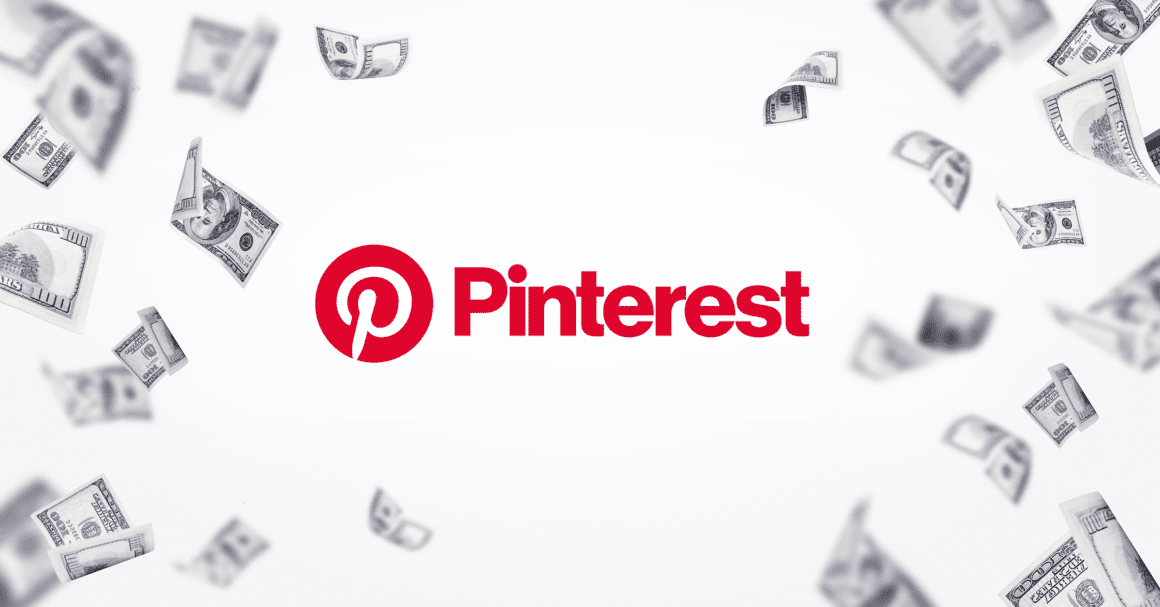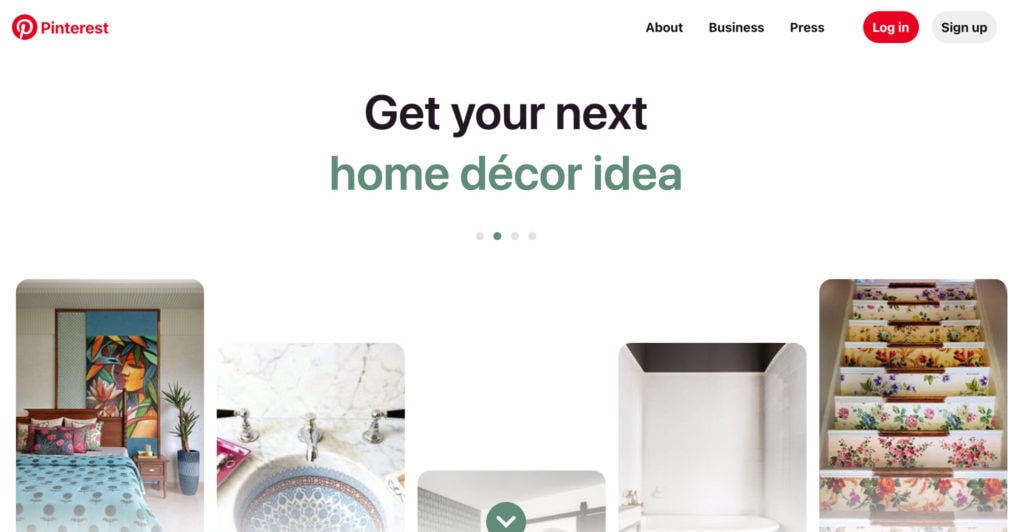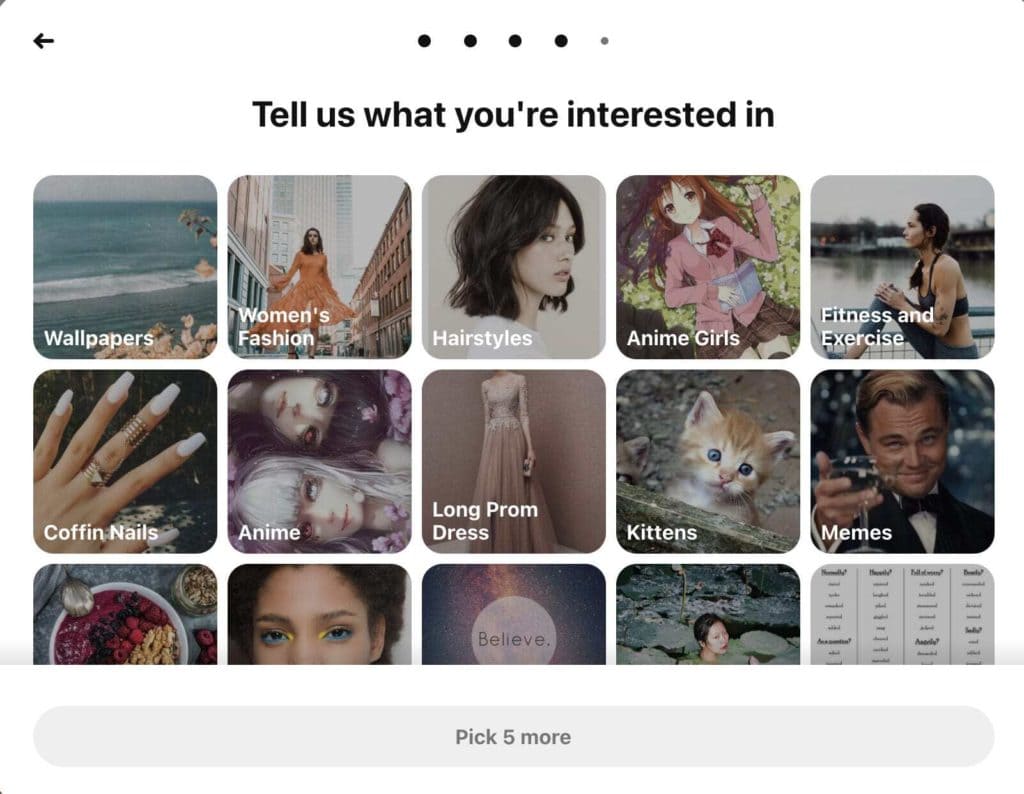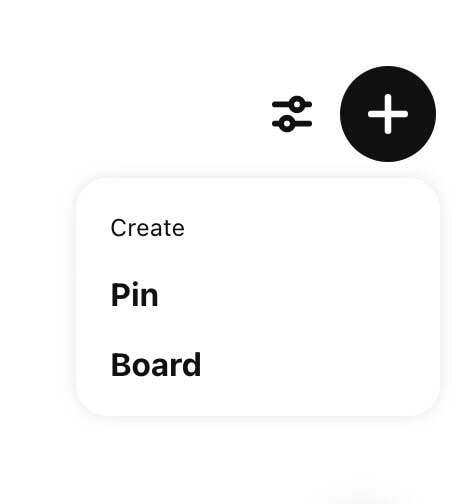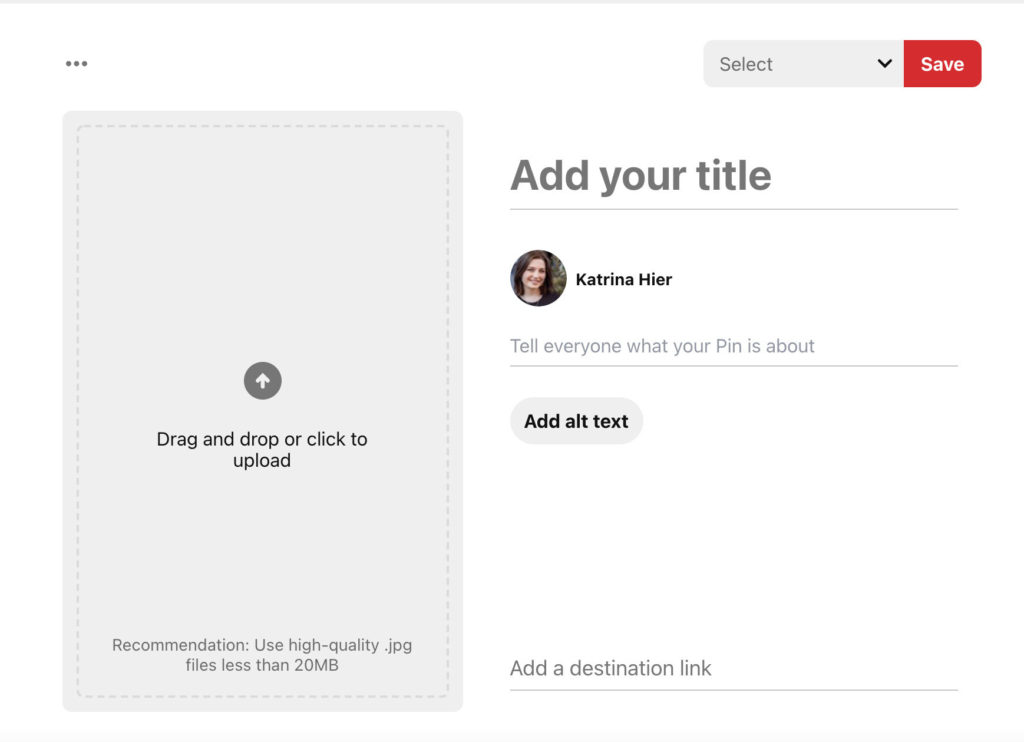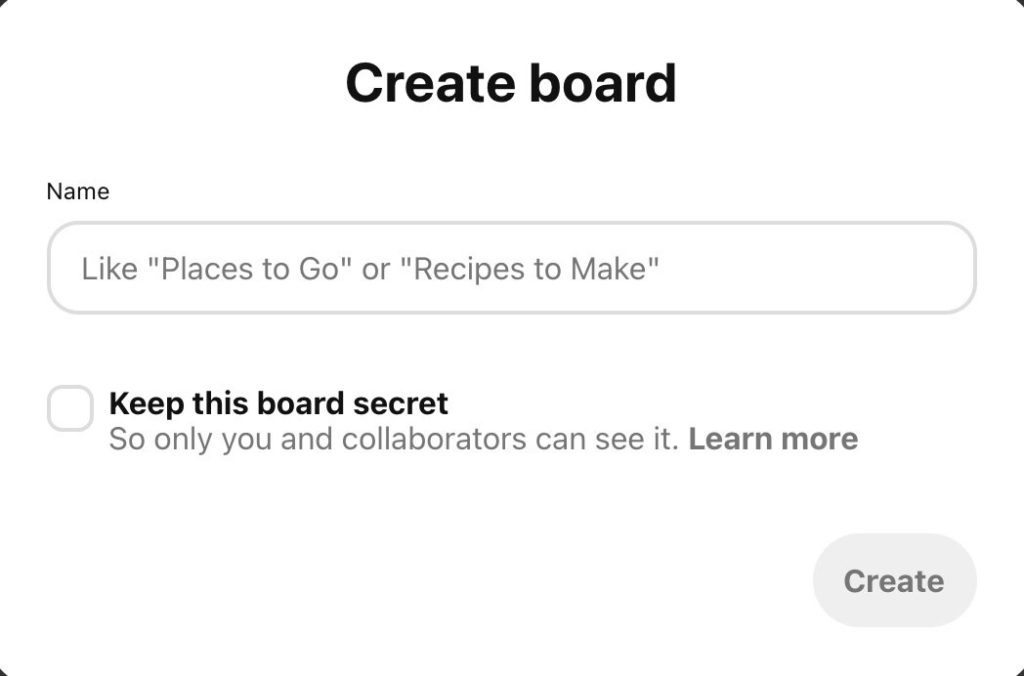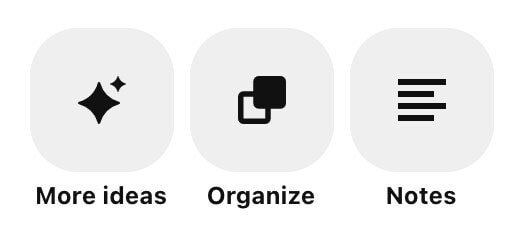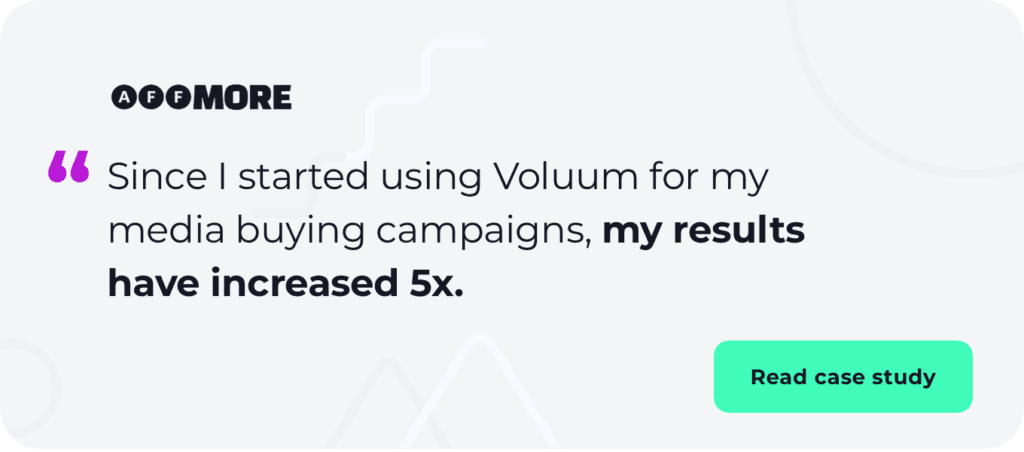The great news: Pinterest is the underrated affiliate marketing powerhouse.
But how? How is the seemingly-meaningless, all-day-long-pinning mom-platform so powerful?
Well, because Pinterest isn’t just some photo-centric social media platform like some others that we are all-too-familiar with. It’s a visual search engine with an engaged audience ready for affiliates and warmed up for purchasing. And with the power to do it 😉
The value of Pinterest users
Pinterest is a valuable affiliate marketing tool because of its unique function and users’ profile.
With 454 million active users, Pinterest ranks among the most popular online platforms.
And what’s the Pinterest demographic? Over 60% women and over 45% users with a household income over $100k. Not too bad.
What’s more, the first major age group is between 35-49 and the second largest is 18-29. This means users not only have the money to make purchases, but also the means.
The image-based search engine has been consistently growing since its inception in 2010 and doesn’t seem to be slowing down.
Compared to other social media platforms, Pinterest has less competition with respect to affiliate marketing and an audience more ready to buy. It also allows you to create much more targeted posts as Pinterest has their own SEO from their search bar.

Pinterest affiliate marketing 2024
And why is Pinterest affiliate marketing so especially powerful?
Not only do Pinterest users have the means to make purchases, they have the motivation. Pinterest is ridden with “inspiration” boards. The pins compiled on these boards are expressly there for “inspiration” – ie. plans for home decor, gardening, fitness etc that users do not yet have. In other words, they have yet to buy those goods.
That’s why Pinterest is an outstanding platform for selling. Because people are coming ready to buy. The intent for purchase is there in most cases.
Your affiliate products just need to be attractive enough – but that part’s on you.
Another major reason behind Pinterest affiliate marketing: it’s a relatively cheap and easy route to getting sales.
There’s not as much competition among affiliate marketers on Pinterest and users are ready to engage and buy. Plus, it’s not that hard to gain a following on their platform.
Getting started with Pinterest affiliate marketing
If you have no profile yet, that’ll be your first step: make a Pinterest account. Simply click Sign Up in the top right corner.
While you fill out your profile, you’ll be prompted to select some categories you’re interested in. Here you have the chance to see some of the most popular niches on Pinterest. Not every affiliate product and vertical is going to work on Pinterest – but here are the ones that will.
Next step? Build up your profile. You want your profile to look natural. Users will have much more trust in you if they perceive you as a knowledgeable person in your niche with honest product recommendations.
However, you have to build it up strategically. The first thing to consider: choosing a profitable niche. We’ll go into specializing in a niche later, but make sure to focus your pins and boards within a given vertical.
Pins
The button below is what you’ll click on to make a new pin or group board.
A pin is just a single post with an image, title, alt text and description. These are where you will add affiliate links. You can reshare other people’s pins or make your own.
Your feed should have a healthy mix of reshared posts, your own, and affiliate posts. And by healthy, I mean reshared should be about 70%, your own around 20%, and affiliate 10%.
Remember, in order to build up a target audience that is actually interested in your content, you have to be genuine. No page that has advertisements in every corner was ever deemed trustworthy or enjoyable.
Another thing to note: remember that part about Pinterest being a visual search engine? This is where you optimize your keywords. But we’ll delve into that later.
Boards
Your boards are your other main source of interaction on Pinterest. The image below is what you’ll have to fill out after clicking “Create Board”. Though you don’t have the possibility to add as many keywords and target as accurately, your boards will be your main source of interaction and gaining an audience.
You should aim for 6-10 relevant boards at the start. These should all be related to niches within your vertical, but each one’s topic should be distinct. Once you create pins to start, the key is consistently posting on a daily basis. Let’s say 10-40 posts a day. To stay active, use these buttons below…
“More ideas” suggests pins to add to your board. “Organize” enables you to rearrange the pins, refreshing your board. “Notes” are just for yourself to jot down things about your board… or whatever else comes to mind. 🙂
Using these functions on Pinterest lets the algorithm know you are an active user and thus shows your content more frequently.
Affiliate program & Affiliate link
So advertising affiliate offers on Pinterest is pretty straightforward: just insert your affiliate link in your pin.
But it’s not always that easy. You have to make sure your affiliate program allows for your link to be posted on Pinterest. It’s a big enough platform that certain affiliate programs have specific rules for the visual search engine. Or, their rules aren’t all that specific…
For example, the Amazon Associates program has differing rules per regional program. While the European Amazon affiliates are free to post links to Pinterest, the US policy is not as clear. Many other affiliate bloggers have posted mixed reviews about the policy of Amazon affiliate links on Pinterest.
What can you do in this case? Link to your blog post on the topic. Of course, this requires that you have a website or at least a landing page. If you want to do Pinterest affiliate marketing without a website, make sure to find an affiliate program that allows you to post directly to Pinterest.
An affiliate marketing software like Voluum can help you stay on top of your affiliate links and their performance. But there are some important rules to follow however with affiliate links:
- Avoid link cloaking. In other words, don’t shorten affiliate links with tools like Bitly and don’t hyperlink them to text.
- Make sure to disclose affiliate links. The Federal Trade Commission requires that affiliates clearly show that you can make income off a purchase from that link. Hashtags or statements like “sponsored”, “ad”, or otherwise will suffice.
- Check that the given board allows affiliate links to be posted.
By breaking the rules you risk a punishment and fines from the FTC. Or, your Pinterest or affiliate program accounts can be penalized… and that might be even worse.
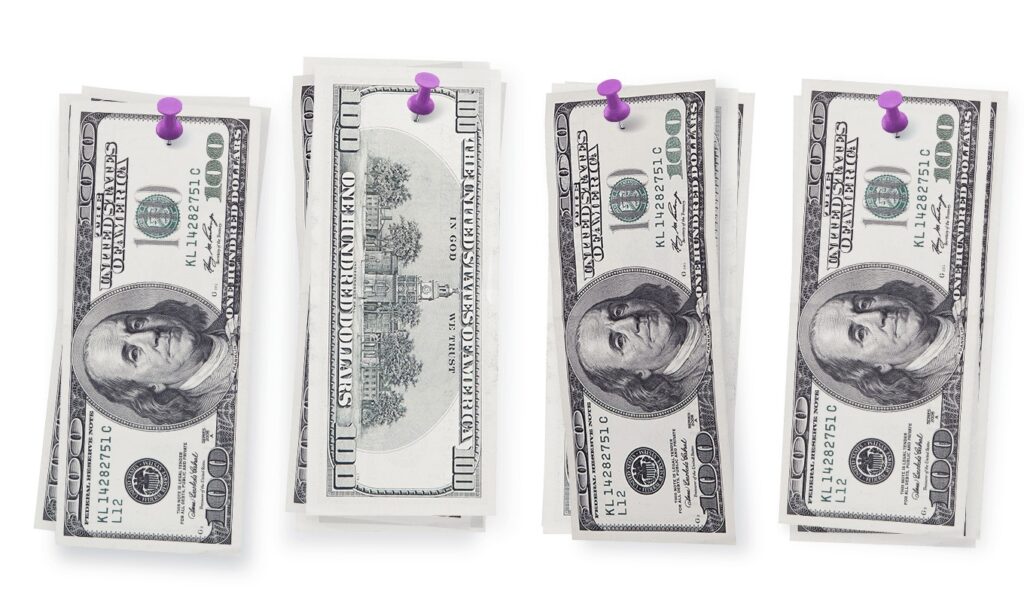
Best Pinterest tools
Some tools are essential to Pinterest while others are just helpful. If you’re a beginner affiliate marketer then I might suggest going with the essentials and doing the rest on your own.
Photos & editors
As I’ve mentioned a few times, and you hopefully already know, Pinterest is all about the visuals. Photo quality is something you simply can’t skimp on. If you’re not taking your own pictures then you’ll have to look elsewhere.
- Luckily, you have free stock photo sources: Unsplash, Foter or many more. While there are loads of free stock photo resources on the internet, you have to be careful of a few things…
- Image quality: free photos are often low quality. Make sure your images are the highest resolution they can be.
- Attribution: sometimes you have to link the photo or credit it to a certain artist or source. Keep an eye out for the Creative Commons License which restricts how and where you can share photos.
- Platform membership: free of course comes with some kid of price. Usually this is a type of membership form by email or otherwise with a free stock photo source. They may also limit the amount of photos you have access to.
- Paid stock photos are the next step up. You may want to go with one of these platforms once your Pinterest is up and running: Shutterstock, Getty Images, and more.
- You don’t need to be in graphic design to be a successful Pinterest affiliate marketer, but you do need to put in some effort. Especially with images that include text. Some useful design tools are: Canva, Adobe Photoshop, or Inkscape (that one’s free).
Pin Scheduling
When first starting out on Pinterest, you’re going to have to be very active. Like I mentioned, you should be posting up to 10-40 posts a day on your various boards. Here’s where some Pinterest marketing tools can help you out.
Depending on your working style, you should be either spending an hour or two (dispersed throughout the day) on Pinterest or you can use a tool like Tailwind to schedule posts. This way, you can take a chunk of time about one day a week to select, edit and schedule posts for the week without having to deal with it on a daily basis.
Affiliate Tracking
A Pinterest Business account has some form of analytics, but you don’t need a business account. Plus, as an affiliate, you need analytics that can track the performance of your offer and your conversion rates – not just the performance of your pins. But there’s a whole slew of reasons why a tracker is essential for any affiliate.
And that’s where an affiliate marketing software like Voluum Tracker can help. Use our tracking platform to track and measure your advertising campaigns and affiliate offers. What’s more, take advantage of this data to further optimize your campaigns, increasing profits. You can even automate these processes eventually if you want with Voluum.
Just check out how it happened with one of our clients, AFFmore. With the help of Voluum tracker – and more specifically, the Traffic Distribution AI feature – they boosted results 5x!
Top 8 Pinterest Affiliate Marketing Strategies for 2023
But you’re not going to be making sales and profits through the roof simply by assembling some pretty photos. Pinterest affiliate marketing may be relatively easier and cheaper, but it will require targeted strategies and conscious effort. Here are the top 8 strategies for making affiliate sales on Pinterest.

1. Interact to gain followers
Gaining followers won’t happen overnight. But there are plenty of ways to encourage people to follow your account & eventually buy into your affiliate pins.
- Comment on other pins.
- Follow accounts focused on the same niche with a decent follower to pinners ratio.
- Follow group boards focused on your niche and related to your relevant keywords. Consider the quality of the board and if it is open-invite or invite only (usually invite-only group boards are less spammy).
- Repin content related to your niche.
- Share your pins with companies. They are likely to repin your content so send it to a company related to your pin or tag them.
By the way, these strategies suggest sticking to your niche because you really want to strive for followers that are truly engaged with your niche so that they actually make purchases.
2. Format Pins
The next important step is creating eye-catching, attractive pins. As I mentioned, you’ll have to be creating some of your own posts and your affiliate pins should be in the minority.
To make high-quality pins, you’ll need to be using high-quality photos (mostly found in those stock photo resources I listed) and decent graphics (with those graphic design tools). Your affiliate pins especially will probably require some text or icons to make their CTA message even clearer and attention-grabbing.
It’s good practice to experiment with the shape and format of pins to see what works best. Typically, vertical pin images are suggested so that they don’t get cut off in the mobile display of Pinterest. However, you can also test out small pins to see how they do. Oftentimes, when you’re faced with pages and pages of pins, the shape itself can make it standout.
Another thing, try not to draw attention to the fact that you are trying to sell something. After all, pins that seem spammy not only annoy users, but can actually get you banned from boards.
3. Track everything
Continual tracking and analysis is essential to any form of affiliate marketing. For affiliates though, platforms like Google Analytics and Pinterest analytics tools won’t be enough. Those are either designed for offer owners or for social media accounts engagement.
But you need to know everything about the performance of your affiliate marketing campaign. Tracking with an affiliate software like Voluum is essential to be able to optimize your advertising with time. Plus, with Voluum you can eventually automate it as well!
You may have had some affiliate offers running with some success, but as we all know, anything on the internet can change in a second. The same goes for your campaigns: if you’re not always prepared with the aspects of your campaigns to optimize, then your advertising can become obsolete.
The best part about Voluum, you can have a free demo to check out every nook and cranny of our unbeatable affiliate tracking software. Just click on the banner below to check it out.
4. Optimize Keywords
Like I’ve said, Pinterest is essentially a search engine for pictures. Most users are coming to the site to look for something – whether it be home decor inspiration, materials for an english course, or an arts and crafts project.
Your posts can be optimized for these searches. Choose your keywords strategically and make sure to stay consistent. You obviously have fewer characters in a pin than a blog to SEO and appear in the search results – however, you have significantly less competition too.
Where do those Pinterest SEO keywords go?
- Title
- Description
- Alt text
- On the image (this is more as a CTA or attention-grabber)
And of course, your link is the final component of your pin.
Keep track of all the performance of your keywords. Use a tracking software like Voluum to know which of your experiments worked best for your audience so that you can continually optimize your strategy.
5. Have your own website + Blog posts
Having your own affiliate website is not only the safer way to do Pinterest affiliate marketing, but also more sustainable. With a website you can link to your blog posts or landing pages rather than directly to a product selling page.
It’s safer because firstly, you avoid getting penalized for posting direct affiliate links in your pins. Secondly, once your pin is reshared, you cannot edit it. Therefore, if a repinned affiliate link breaks, is changed, or you want to switch it with a better product or program link – you’ve lost all those sales from reshared pins. If you link
How is it more sustainable? As with any entrepreneurial endeavor, diversification is a great affiliate marketing strategy. Your website offers a lot more avenues to profits in the long term, even if Pinterest is outstandingly successful. And remember, you can also track your organic traffic with your affiliate marketing software, Voluum.
Pinterest presents a powerful supplement to your overall affiliate marketing business.
However, keep in mind that Pinterest can work well even if you don’t have your own website. It’s just something I strongly recommend down the road.
6. Make an email list
Another alternative to posting direct affiliate links in pins is leading users to walled content or some kind of competition. It’s up to you what you want to offer – be it a course, a special prize, or a diet plan.
Obviously, the aim of running this sort of promotion is to gather email addresses to eventually market to. Based on what those users were interested in or the pins / boards they came from, you can determine what offers you should be sending them via email.
7. Choose a strong niche
Given that we generally know the demographic of Pinterest, it goes without saying that a certain range of niches works on the platform. And other niches really don’t.
Plus, Pinterest is all about appearances so you’ll inherently need a vertical that’s photogenic.
Here are the verticals that thrive on Pinterest:
- Travel
- Photography
- Fashion
- Home Decor
- Food & recipes
- Relationships
- Self-Help
- Parenting
- Person Finance
- Health & Fitness
- Beauty products / Personal care
- DIY + Arts & Crafts
- Gift inspiration
If you don’t know which niche to choose, I would suggest you check out Course 1 on Affiliate Academy by Voluum where they discuss your options, the possibilities within each niche, and an overall affiliate marketing strategy you should follow.
So we’ve got a lot listed here actually. Go as wild as your inner Pinterest guru lets you.
8. Learn continuously
You need to be constantly improving your skills. If you’re not always learning, staying on top of new trends, discovering new pockets of profit – you will soon become irrelevant.
Unfortunately, that’s the hard truth with most things digital. The field is changing continuously so you have to make sure your affiliate marketing skills are rock solid.
But don’t worry 😉 We’ve got a way for you to stay fully up-to-date and refine your skills: Affiliate Academy by Voluum. There are a few courses for varying levels of affiliate experience and it’s 100% free 😀 so get started as soon as possible!
No banner with provided ID foundPinterest Affiliate Marketing: Yay or nay?
If you couldn’t tell, we recommend Pinterest as a resource for affiliate marketers.
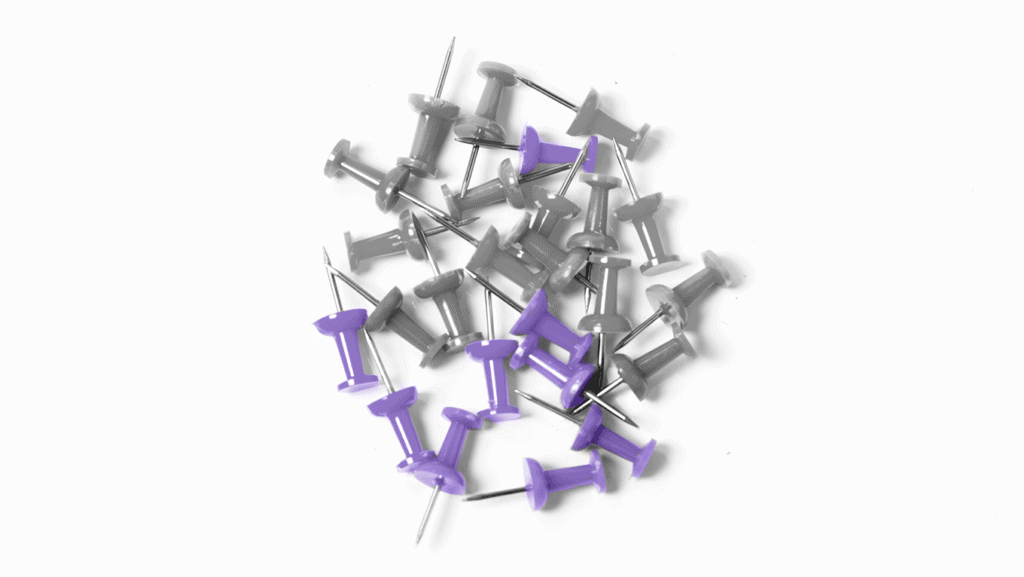
It’s a profitable supplement for all levels of affiliate marketers, not just because of its power to convert and lack of competition – but also because it’s pretty cheap and risk-free.
But, you’ll need a solution that keeps track of every aspect of your affiliate marketing campaigns. Let that solution be Voluum Tracker.

